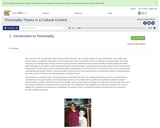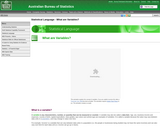
Google Slides presenation on informative speaking.
- Subject:
- Business and Communication
- Communication
- Material Type:
- Diagram/Illustration
- Date Added:
- 09/29/2023

Google Slides presenation on informative speaking.

This topic is presented in two parts, in adherence with the learning outcomes.

Andrew Jackson’s two terms as President (1829-1837) included many tests of the American Democratic system. Jackson vetoed twelve pieces of legislation, including the Maysville Road Bill and the rechartering of the Second Bank of the United States. Jackson also oversaw Indian Removal and weathered South Carolina’s nullification crisis over what the Carolinians called the Tariff of Abominations. Jackson’s presidency has been known as the “era of the common man,” a time when voting rights were extended to all white men in almost every state. This era also saw the rise of American Democratic Party. However, recent scholarship argues that the 1830s was a time of staunch nationalism as the Southern cottonocracy spread its plantation system further west. The purpose of this primary source set is to weigh both sides of the argument and decide whether Jackson’s presidency was a time of democracy, a time of rising nationalism or a combination of the two.

In an effort to preserve the balance of power in Congress between slave and free states, the Missouri Compromise was passed in 1820 admitting Missouri as a slave state and Maine as a free state. Furthermore, with the exception of Missouri, this law prohibited slavery in the Louisiana Territory north of the 36° 30´ latitude line. In 1854, the Missouri Compromise was repealed by the Kansas-Nebraska Act. Three years later the Missouri Compromise was declared unconstitutional by the Supreme Court in the Dred Scott decision, which ruled that Congress did not have the authority to prohibit slavery in the territories.

This is the Ohio Semiconductor Collaboration Network (OSCN) Introduction to Manufacturing-16 Week course. Please note, these materials can be used in a 16-week or 8 week format. As improvements are made, the content will be updated--so check back frequently!For questions, please email: Elicia Flom: eflom1@cscc.edu

This is the Ohio Semiconductor Collaboration Network (OSCN) Introduction to Vacuum Systems Technology-16 Week course. Please note, these materials can be used in a 16-week or 8 week format. As improvements are made, the content will be updated--so check back frequently!For questions, please email: Elicia Flom: eflom1@cscc.edu

This is the Ohio Semiconductor Collaboration Network (OSCN) Semiconductor 101-16 Week course. Please note, these materials can be used in a 16-week or 8 week format. As improvements are made, the content will be updated--so check back frequently!For questions, please email: Elicia Flom: eflom1@cscc.edu

Written by Lansing Community College Psychology professor Dr. Mark Kelland, this book covers general personality theory, with an emphasis on cultural aspects affecting personality development. There is also a section focusing on making positive choices in the development of one's personality from a number of different cultural/philosophical perspectives.

At this midpoint in the Spottsylvania Campaign (May 7-20), Union forces under Grant and Confederate forces under Lee were facing off to the south and east of Spottsylvania Court House. On May 12, Grant ordered Hancock to assault Ewell's position in the "mule's shoe" salient. This map attempts to depict the action during that assault. It shows Ewell's position at the start of the assault and the position he held after the Union forces breached the lines.

Thomas Jefferson (Democratic-Republican) defeated John Adams (Federalist) in the presidential election of 1800 by an electoral vote of seventy-three to sixty-five. However, because electors could not distinguish between president and vice president when voting prior to the Twelfth Amendment (1804), Jefferson and his running mate, Aaron Burr, received the same number of votes in the Electoral College. With the vote tied, the presidential election was then decided by the House of Representatives as stipulated in Article II, Section 1, of the U.S. Constitution. After thirty-six ballots, the Federalist-controlled House finally elected Thomas Jefferson president on February 17, 1801.
The digital collections of the Library of Congress contain a wide variety of material associated with the presidential election of 1800, including manuscripts, broadsides, newspapers, and government documents. This guide compiles links to digital materials related to the presidential election of 1800 that are available throughout the Library of Congress website. In addition, it provides links to external websites focusing on the 1820 election and a selected bibliography.

Pressbooks is an Open Textbook platform. This Open (Canvas LMS) course demonstrates various methods of placing an open Pressbooks textbook in Canvas, including as a Navigation menu item and as links, PDFs or pages within Modules. It also includes various methods of providing students with a print version.

Learning Objectives
Understanding Research
Source Types
Academic
Nonacademic
Evaluating Sources
Incorporating Research
Plagiarism
Avoiding Plagiarism
Source Documentation Styles
How to Parenthetically Cite
Source Pages
How to Verbally Cite

Contains 623 maps chosen from more than 3,000 railroad maps and about 2,000 regional, state, and county maps, and other maps which show "internal improvements" of the past century. The maps presented here are a selection from the Geography and Map Division holdings, based on the popular cartobibliography, Railroad Maps of the United States: A Selective Annotated Bibliography of Original 19th-century Maps in the Geography and Map Division of the Library of Congress, compiled by Andrew M. Modelski (Washington: Library of Congress, 1975). This annotated list reveals the scope of the railroad map collection and highlights the development of railroad mapping in 19th-century America.
The Railroad maps represent an important historical record, illustrating the growth of travel and settlement as well as the development of industry and agriculture in the United States. They depict the development of cartographic style and technique, highlighting the achievement of early railroaders. Included in the collection are progress report surveys for individual lines, official government surveys, promotional maps, maps showing land grants and rights-of-way, and route guides published by commercial firms.

In response to the election of Abraham Lincoln to the presidency of the United States on a political platform that opposed the expansion of slavery, South Carolina seceded from the Union on December 20, 1860. Six more states would follow in the ensuing months: Mississippi, Florida, Alabama, Georgia, Louisiana, and Texas. In February 1861, they formed the Confederate States of America, an entity considered illegal by the United States government. On April 12, 1861, Confederate forces attacked Fort Sumter, a Union fort in the harbor of Charleston, South Carolina. This began the first battle of the deadliest conflict in US history, the American Civil War. This primary source set uses documents, illustrations, and maps to explore events and ideas that drove the formation of the Confederate States of America and the United States’ descent into civil war.

This collection consists of 105 library books and manuscripts, totalling approximately 8,700 pages drawn principally from the Law Library and the Rare Book and Special Collections Division of the Library of Congress, with a few from the General Collections. The selection was guided in large part by the entries in Slavery in the Courtroom: An Annotated Bibliography of American Cases by Paul Finkelman (Washington, D.C.: Library of Congress, 1985), which was based on research in the Library collections. The documents comprise an assortment of trials and cases, reports, arguments, accounts, examinations of cases and decisions, proceedings, journals, a letter, and other works of historical importance. Most of the items date from the nineteenth century and include materials associated with the Dred Scott case and the abolitionist activities of John Brown, John Quincy Adams, and William Lloyd Garrison. Eighteenth-century cases include Somerset v. Stewart, decided in England a few years before the signing of the Declaration of Independence, which "underscored the great tension created by slavery in Anglo-American law."

A variable is any characteristics, number, or quantity that can be measured or counted. A variable may also be called a data item. Age, sex, business income and expenses, country of birth, capital expenditure, class grades, eye colour and vehicle type are examples of variables. It is called a variable because the value may vary between data units in a population, and may change in value over time. There are different ways variables can be described according to the ways they can be studied, measured, and presented.

For every state there was a saturation point, a point of diminishing returns, in the development of railroad mileage and access to the network. Here too, the pattern of Southern development was impressive and consequential. Beyond a certain point each mile of railroad added to a network included an increasingly small percentage of the population.

A Journey of Injustice: Remember and commemorate the survival of the Cherokee people, forcefully removed from their homelands in Georgia, Alabama, and Tennessee to live in Indian Territory, now Oklahoma. They traveled by foot, horse, wagon, or steamboat in 1838-1839.

The American Civil War brought women new responsibilities on the battlefield and at home. Many became providers for their families, managing farms and businesses while male relatives served in the military. Many also contributed to the Union or Confederacy. Some raised money and supplies through ladies’ aid and soldiers’ aid societies as well as the US Sanitary Commission, a private agency that operated across the North and became critical to the Union victory. Others nursed soldiers (Louisa May Alcott, author of the beloved novel Little Women, worked as an army nurse), spied on the enemy, cooked and laundered for enlisted men, and served as uniformed battlefield helpers called vivandières. Unknown numbers of women fought as soldiers by concealing their identities and enlisting as men.

A plan of the city and environs of New York : as they were in the years 1742-1743 and 1744